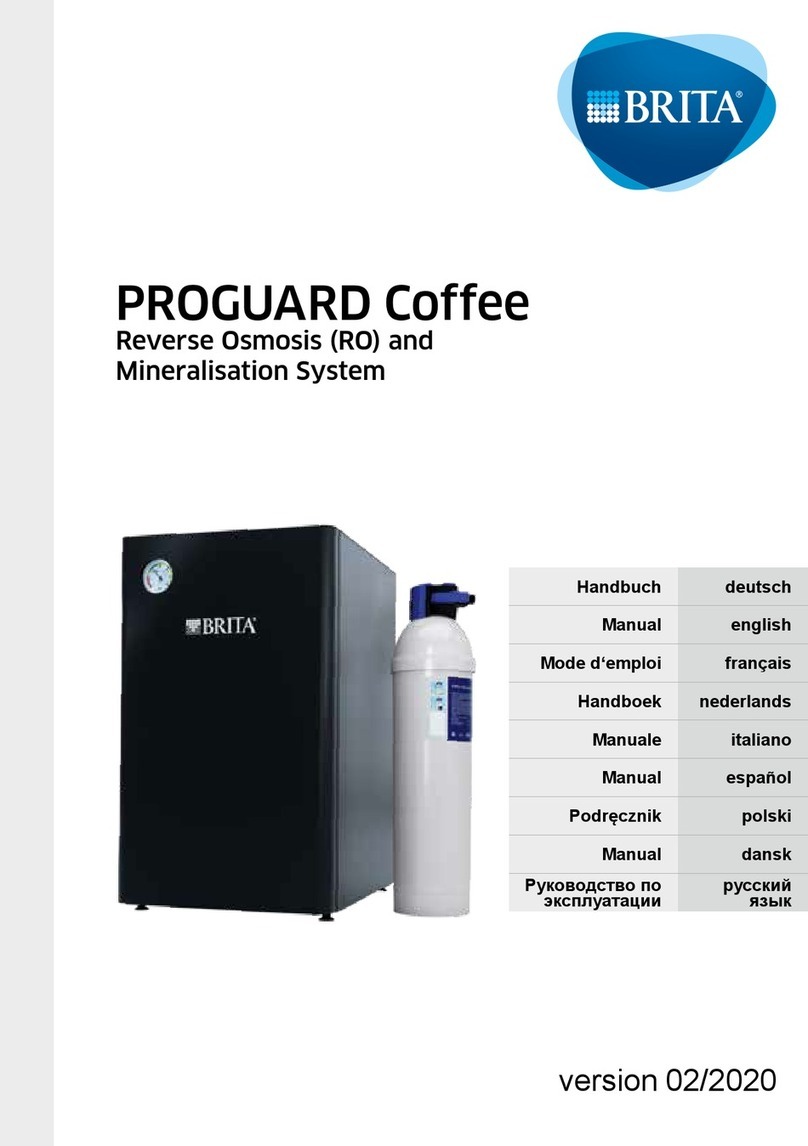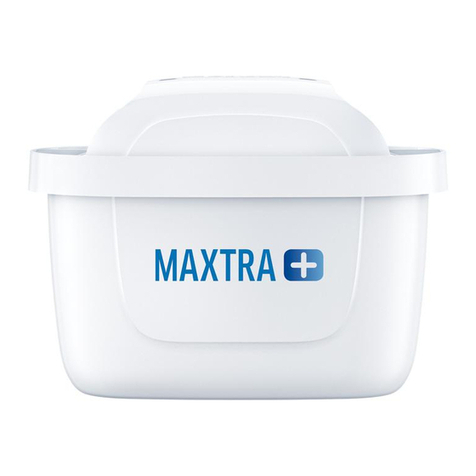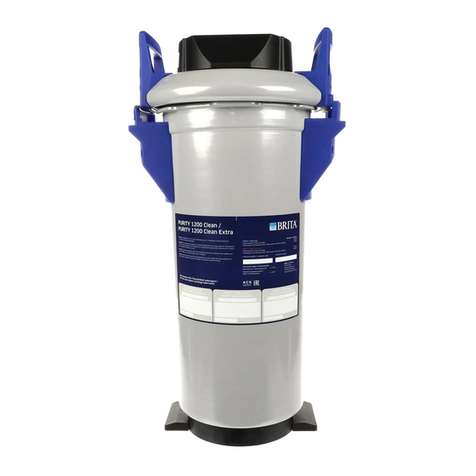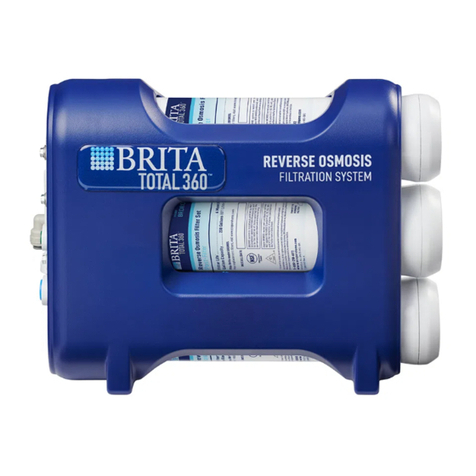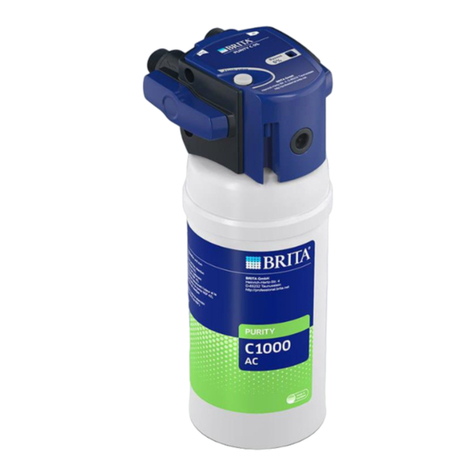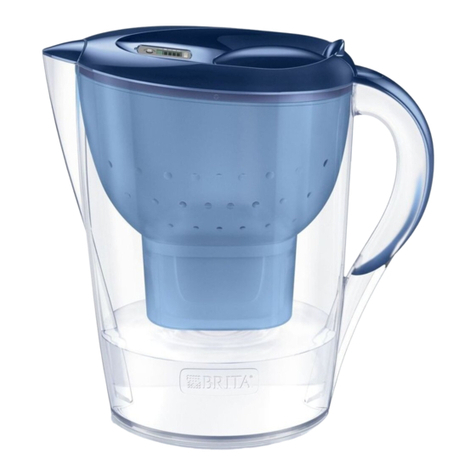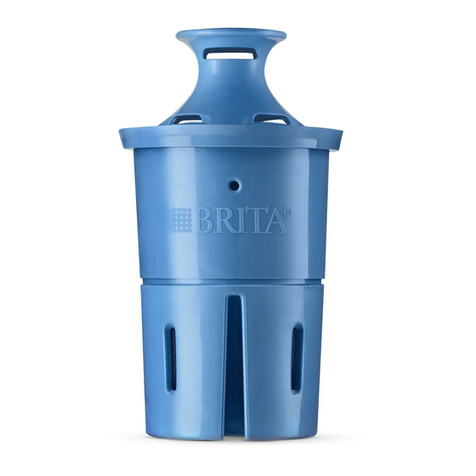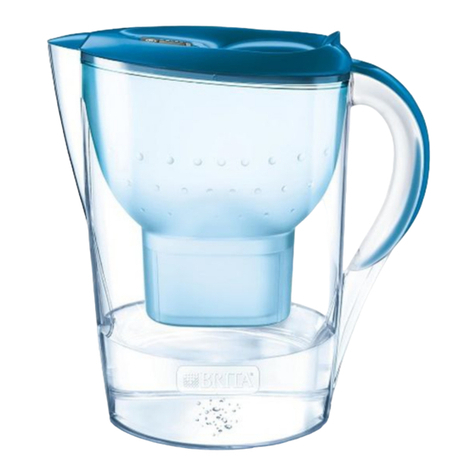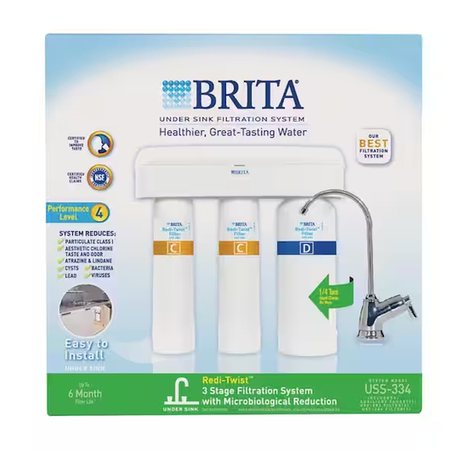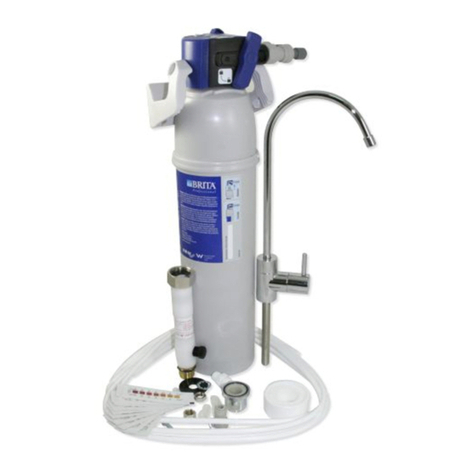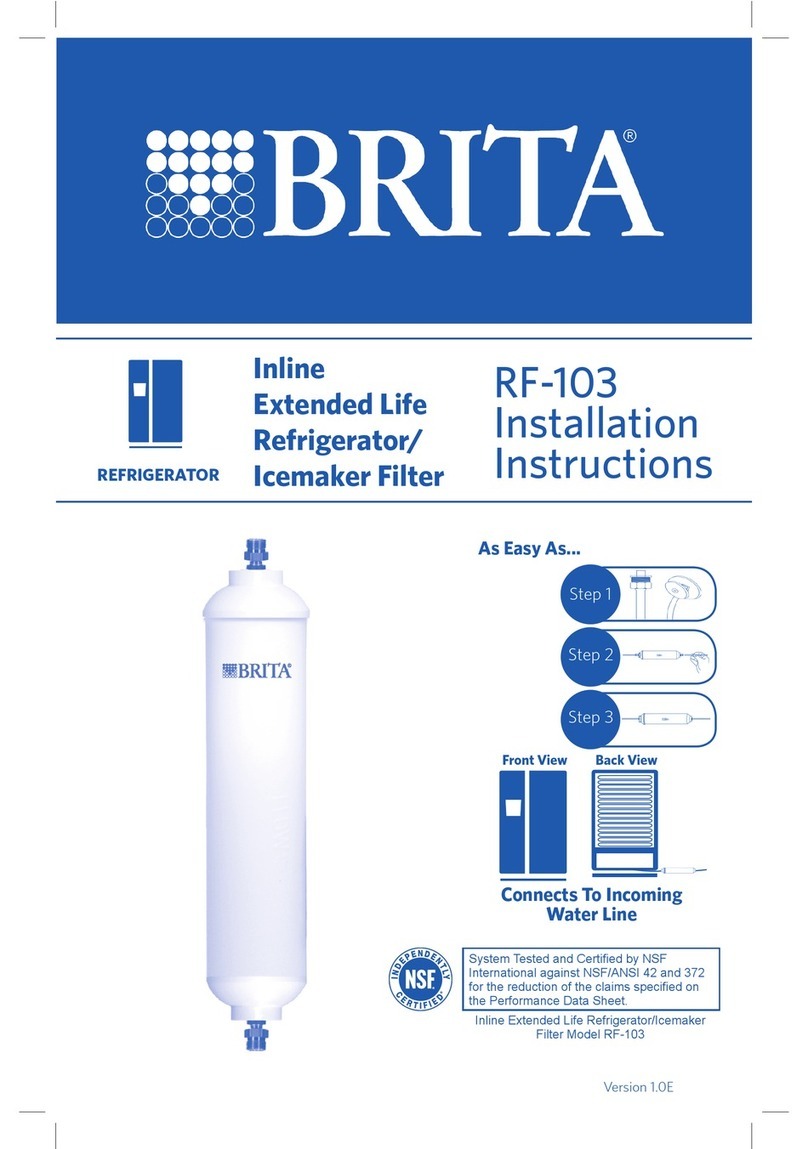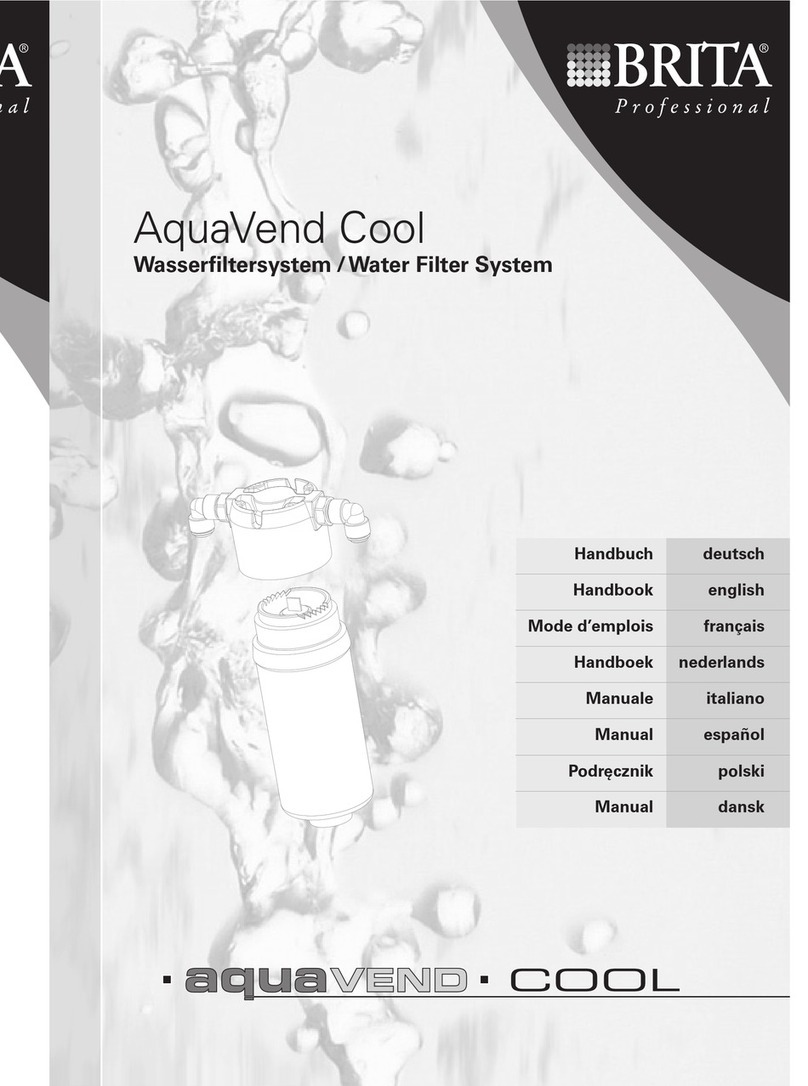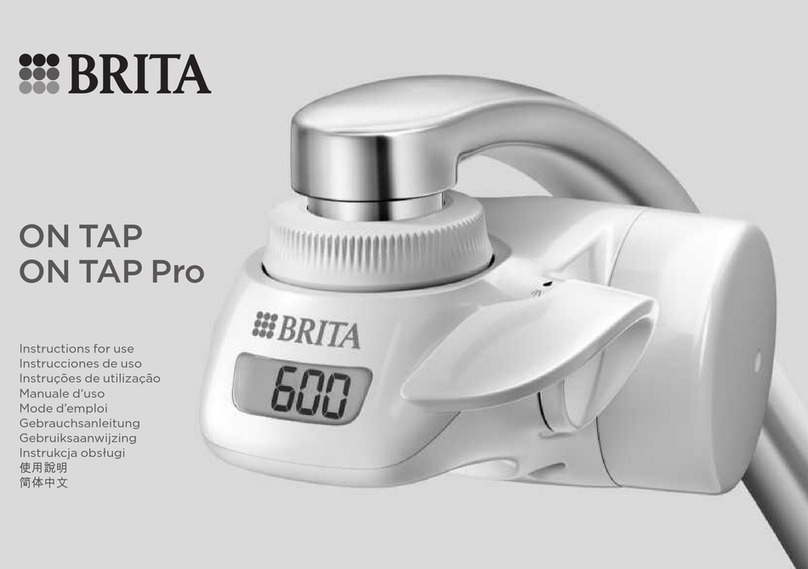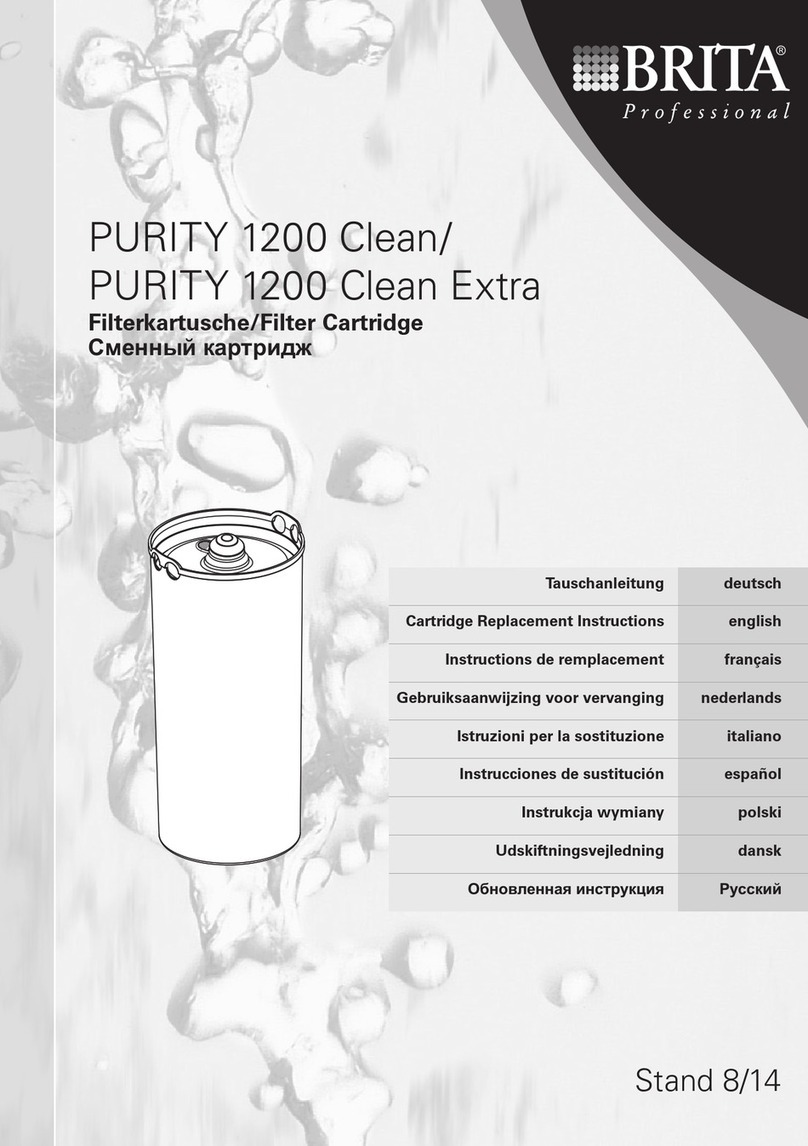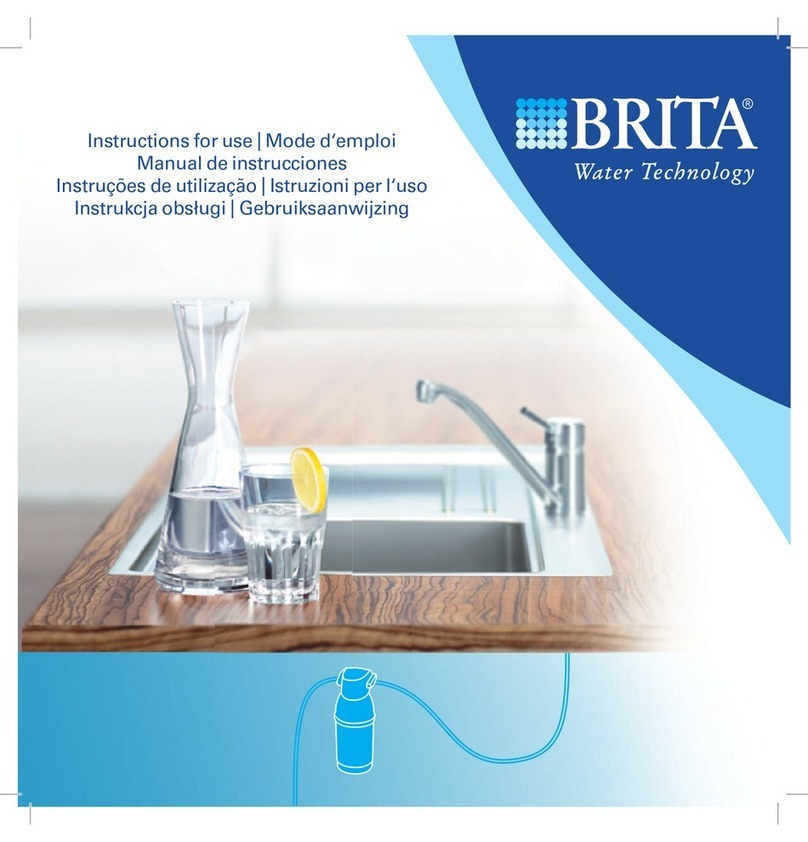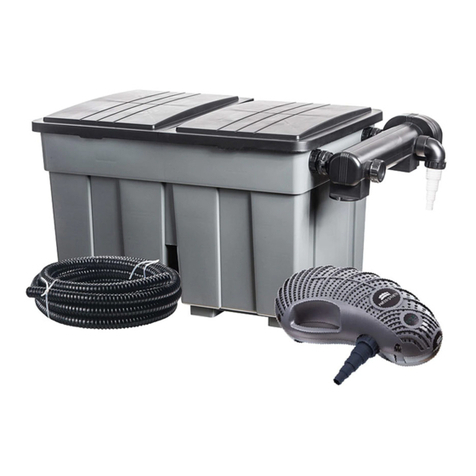
5
RO SYSTEM BASICS
CAUTION Do not use with water that is microbiologically unsafe or of unknown quality
without adequate disinfection before or after the system.
BASICS
The performance of the RO System can be characterized and
judged by the quality and quantity of the water produced by the
system. By measuring the contaminant removal performance
and flow rates of the system, its operating status can be easily
evaluated.
FACTORS WHICH AFFECT PERFORMANCE
Performance of the reverse osmosis membrane is affected by
several factors which must be considered when judging the
condition of the system. The main factors which affect system
performance are pressure, temperature, total dissolved solids
level, recovery and pH.
PRESSURE
Water pressure affects both the quantity and quality of the
water produced by the RO membrane. Generally, the
more water pressure, the better the performance of the
system. Be careful not to go below 40 psi or exceed 100 psi, the
minimum and maximum operating pressure of the system.
TEMPERATURE
The reverse osmosis process slows with decreasing
temperature. To compensate, a temperature correction factor
is used to adjust the actual performance of the RO membrane
filter to the standard temperature of 77°F (25°C). This allows
the performance of the unit to be accurately gauged against
published standards. Temperature does not affect the
concentrate flow rate.
TOTAL DISSOLVED SOLIDS
The minimum driving force which is necessary to stop or
reverse the natural osmosis process is termed osmotic
pressure. As the total dissolved solids level of the feed water
increases, the amount of osmotic pressure increases and acts
as back pressure against the reverse osmosis process.
Osmotic pressure becomes significant at TDS levels above
500 mg/L (ppm).
HARDNESS
Hardness is the most common membrane foulant. If ignored,
this relatively harmless component of feed water will scale
a membrane over time. Use of a softener will reduce the
fouling effect on a membrane. One way to detect too much
hardness in the feed water is the weight of a membrane
installed for a period of time. A fouled membrane (dried) will
weigh significantly more than a new membrane. The increase
in weight is a result of precipitated hardness inside the
membrane.
IRON
Iron is another common membrane foulant. There are a variety
of types of iron, some of which cannot be removed by an iron
filter. Clear water iron can be removed more effectively by a
softener. Particulate iron can be removed more effectively by
a 1 micron filter. Organic- bound iron can be removed only by
activated carbon or macroporous anion resin. If there is enough
iron to exceed the EPA secondary drinking water standard and
softening the water is not an option and the iron is soluble, then
an iron filter is appropriate. If none of these are an option then
regular replacement of membranes will have to be accepted.
PRODUCT WATER RECOVERY
Product water recovery plays an important role in determining
membrane and system performance. Recovery refers to the
amount of water produced in relation to the amount of water
sent to drain. The standard calculation is:
% Recovery = Product Water ÷ (Product Water + Waste Water) x 100
The system uses a flow control assembly to restrict the flow
of waste water to the drain. This restriction helps maintain
pressure against the membrane. The sizing of the flow control
assembly determines the recovery rating of the system. The
system is manufactured with a recovery rating designed to
be around 25%. Depending on temperature, pressure and
tolerances the actual recovery value may be slightly different
for each system.
ATTENTION RO SYSTEM CUSTOMER:
This system is intended for use on potable water supplies
or disinfected water containing cysts. Do not use where
water is microbiologically unsafe or with water of unknown
quality. If bacterial contamination is present, a recognized
method of water disinfection is required.
Check with your public works department for applicable
local plumbing and sanitation codes. Follow your local
codes if they differ from the standards used in this manual.
The Titan RO System contains a replaceable reverse
osmosis membrane filter which is critical for the effective
reduction of Total Dissolved Solids. The filtered water
should be tested periodically to verify that the system is
performing properly.
NOTE
Increased weight of the RO cartridge may
be a foulant other than hardness.
NOTE
